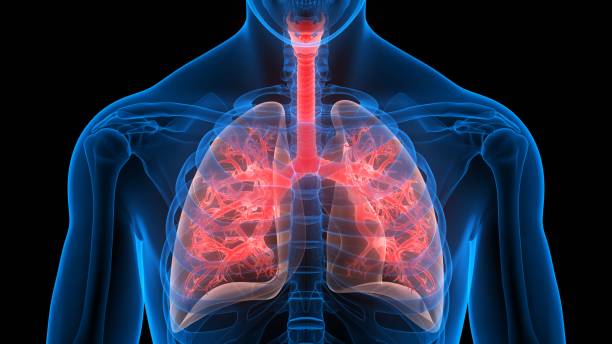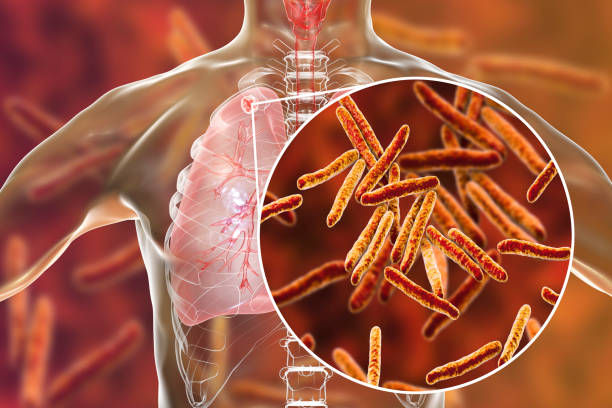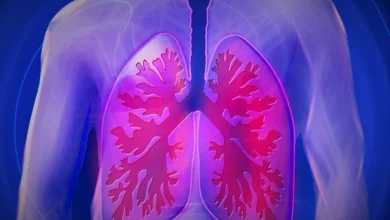Tuberculosis: 5 Essential Nutritional Requirements to Combat Against Tuberculosis
Tuberculosis

Tuberculosis is considered as 13th main cause of deaths. In, 2021, 1.6 million people died due to tuberculosis. Tuberculosis is basically an infection caused by bacteria, its prime target is lungs. It can be a debilitating condition that weakens the immune system and depletes the body of essential nutrients. Tuberculosis is second most infectious disease which may cause death after COVID 19.

In 2021, about 10.6 million got infected from tuberculosis out of which 6 million were males, 3.4 million women and 1.2 million were children. Tuberculosis may affect every age group and it’s in every country on the globe. However, it’s not entirely deadly; it’s both curable and preventable as well. According to reports, about 74 million people were saved due to early diagnosis and treatment.
In order to combat the infection and promote healing, tuberculosis patients need to follow a nutritious diet that supports their overall health and strengthens their immune system. In this article, we will explore five essential nutritional requirements for TB patients. Tuberculosis eradication till 2030 is among UN Sustainable Developmental Goals.
Tuberculosis, commonly referred to as TB, is an infectious disease caused by the bacteria Mycobacterium tuberculosis. It primarily affects the lungs but can also target other parts of the body like the kidneys, spine, and brain. Recognizing the symptoms of tuberculosis is crucial for early diagnosis and treatment. In this comprehensive guide, we will explore the different types of tuberculosis and discuss both common and less common symptoms. We will also provide guidance on when to seek medical attention.
High Tuberculosis Burden Countries
According to the reports of World Health Organization, the following are the most affected 5 countries of the world where the occurrence of tuberculosis cases is greater and alarming.
| Countries | TB Incidences | Rate per 100000 population |
| India | 25,90,000 | 188 |
| China | 8,42,000 | 59 |
| Indonesia | 8,24,000 | 301 |
| Philippines | 5,91,000 | 539 |
| Pakistan | 5,73,000 | 259 |
Types of Tuberculosis
Tuberculosis can be classified into two main types: latent TB infection and active TB disease.
1. Latent TB Infection
In cases of latent TB infection, individuals have been infected with the bacteria, but it remains dormant in their bodies. This means they do not experience any symptoms and are not contagious. However, the bacteria can become active at any point, leading to the development of TB disease.
2. Active TB Disease
Active TB disease is characterized by the bacteria multiplying and causing symptoms. It is important to seek treatment as soon as possible to prevent the spread of the disease to others.
Common Symptoms of Tuberculosis
The symptoms of TB can vary depending on the part of the body affected. The most common symptoms associated with pulmonary TB (TB that affects the lungs) include:
- Constant coughing for 3 weeks
- Coughing up blood or phlegm
- Chest pain or discomfort
- Fatigue and weakness
- Weight loss
- Loss of appetite
- Fever and night sweats
Less Common Symptoms of Tuberculosis
In addition to the common symptoms, there are less common manifestations of TB that may be experienced in some cases. These symptoms include:
- Joint pain
- Swollen lymph nodes
- Abdominal pain
- Blood in urine
- Headaches
- Mental confusion
- Nausea and vomiting
It’s important to note that these less common symptoms may be present when TB affects parts of the body other than the lungs.
When to Seek Medical Attention
If you are experiencing any symptoms associated with TB , it is crucial to seek medical attention promptly. Early diagnosis and treatment of tuberculosis can significantly improve outcomes and reduce the risk of spreading the disease.
Additionally, it is important to seek immediate medical attention if you have been in contact with someone diagnosed with tuberculosis, or if you have a weakened immune system, such as individuals with HIV/AIDS or those receiving immunosuppressive therapy.
Remember, early detection and treatment is key to managing tuberculosis effectively and preventing its spread.
Nutrition for Tuberculosis Patients
The quality food is important for the growth and development. Nutritious foods provide ample nutritional quantities to carry out body functions and also enhance immune system capabilities. The TB patients should maintain healthy and nutritious diet plans to keep immune system healthy and effective and avoid unhealthy drinks and meals. The following are certain foods required for better health and well being.
Protein-rich Diet
Protein is a vital nutrient for TB patients as it plays a crucial role in repairing and building new tissues, boosting the immune system, and maintaining overall strength and energy levels. Including protein-rich foods in their diet can help patients regain their strength and fight infections more effectively.
Some protein-rich foods that TB patients can include in their diet are:
- Fish , chicken and turkey
- Eggs
- Beans and legumes
- Greek yogurt
- Nuts and seeds
It is important for patients to spread out their protein intake throughout the day and include it in every meal. This will ensure a steady supply of amino acids for tissue repair and immune function.
Vitamin C-rich Foods
Vitamin C is an essential nutrient that plays a vital role in boosting the immune system and promoting wound healing. For TB patients, who are more susceptible to infections, incorporating vitamin C-rich foods into their diet is crucial for their recovery.
Some vitamin C-rich foods that TB patients should include in their diet are:
- Oranges and lemons
- Strawberries and blueberries
- Kiwi fruit
- Bell peppers
- Spinach
Including these foods in their daily meals will provide tuberculosis patients with a good dose of vitamin C, which can help in strengthening their immune system and improving their overall health.
Iron-rich Foods
TB patients often suffer from anemia, a condition characterized by a deficiency of iron in the body. Iron is vital for red blood cells production; its prime function is to carry oxygen to body cells. Including iron-rich foods in their diet can help patient’s combat anemia and improve their energy levels.
Some iron-rich foods that TB patients should include in their diet are:
- Beef
- Liver
- Spinach and other leafy green vegetables
- Legumes such as lentils and chickpeas
- Fortified breakfast cereals
By including these iron-rich foods in their daily meals, TB patients can increase their iron levels and improve their overall energy and well-being.
Fluid Intake
Proper hydration is essential for TB patients as it helps in maintaining proper organ function, flushing out toxins, and supporting overall health. Moreover, adequate fluid intake can help in thinning and loosening mucus, making it easier for patients to cough it up.
TB patients should aim to drink at least 8-10 glasses of fluid per day. While water is the best choice, they can also include other beverages such as herbal teas, clear soups, and fresh fruit juices. It is important for patients to avoid sugary drinks and caffeinated beverages as they can cause dehydration and compromise their health.
Vegetables
Leafy green vegetables are also fruitful for the intake of essential vitamins and minerals. Fresh vegetables including spinach are considered important for the treatment of TB.
Conclusion
UN countries along with WHO are keen to eradicate Tb globally by 2030. They denote this strategy as End TB Strategy. This strategy is promulgated in 2014. The major concern is slowing down the treatment and diagnosis of tuberculosis. Especially, Covid 19 is major determinant which slowed down the TB treatments since 2019.
Tuberculosis poses more problems in third world countries due to poor sanitation and hygiene issues. Poverty and overcrowded living styles are making the situations even worse and cause its spread.
A well-balanced and nutritious diet is essential for tuberculosis patients to support their recovery and strengthen their immune system. Including protein-rich foods, vitamin C-rich foods, iron-rich foods, and staying adequately hydrated are crucial for their overall health and well-being. By following these guidelines and working closely with a healthcare professional or registered dietitian, tuberculosis patients can optimize their nutrition and enhance their chances of a speedy recovery.
Remember, a healthy diet is just one aspect of tuberculosis treatment, and patients should always follow the prescribed medication and treatment plan recommended by their healthcare provider.
By understanding the symptoms associated with tuberculosis, you can seek proper diagnosis and treatment. If you experience any persistent symptoms, especially a prolonged cough, it is essential to consult a healthcare professional. Early intervention can make a significant difference in your health and the health of those around you. Stay informed, take care of your health, and get the necessary screenings or treatments for tuberculosis if needed.
The need of time is to identify tuberculosis as early as possible to make it easy to treat it. First of all, one must consider medical attention when the cough continues for more than 3 weeks. In Pakistan, Government of Pakistan has already working on TB treatment free of cost to get rid of the vicious impacts on overall wellbeing.
The health professionals identify the sick and refer them to nearby health facilities for sputum sample collection, which afterwards disclose whether the TB bacteria exist in body or not. In case of positive cases, the medicine is also free for 6-9 months.
Every country must consider the tuberculosis as serious illness and make certain actions to prevent masses from it.
FAQs
What is tuberculosis?
Tuberculosis is a bacterial infection which directly affect lungs
When to seek medical attention?
If cough continue for 3 weeks
Is tuberculosis is treatable?
Yes


